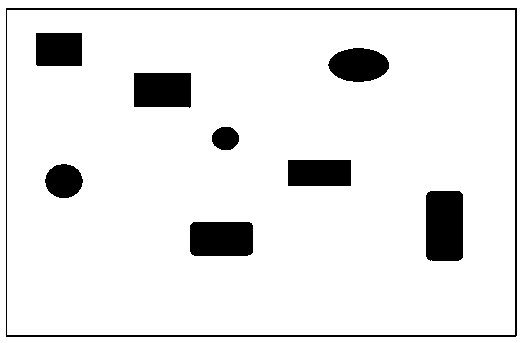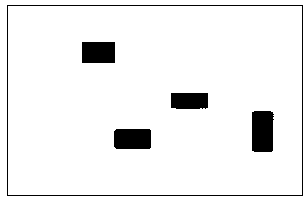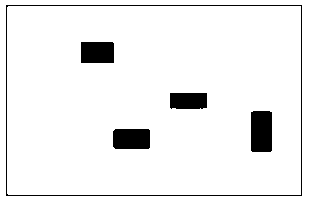A method for removing small area noises in a binary image based on a stack theory
A binary image, small-area technology, applied in image enhancement, image data processing, instruments, etc., to achieve short running time, low complexity, and good denoising effect
- Summary
- Abstract
- Description
- Claims
- Application Information
AI Technical Summary
Problems solved by technology
Method used
Image
Examples
Embodiment Construction
[0019] Based on the stack theory to remove such as figure 1 For the method of small-area noise in the binary image shown, the threshold is set to 5000, and the steps are as follows:
[0020] a. When the stack is empty, sequentially scan each pixel in the binary image that is not stacked;
[0021] b. If the current pixel is black, push the current pixel into the stack and mark that the pixel has been pushed into the stack;
[0022] c. At this time, the stack is not empty, pop the top of the stack and incrementally record the area of the connected area, and at the same time scan the eight points around the marked pixels into the stack in sequence;
[0023] d. Repeat steps b and c to scan the entire connected area, and judge whether the connected area is smaller than the set threshold. If yes, remove the connected area; otherwise, keep it.
[0024] Repeat steps a~d until the entire binary image is scanned once to remove all noise.
[0025] Because the number of pixels (gener...
PUM
 Login to View More
Login to View More Abstract
Description
Claims
Application Information
 Login to View More
Login to View More - R&D
- Intellectual Property
- Life Sciences
- Materials
- Tech Scout
- Unparalleled Data Quality
- Higher Quality Content
- 60% Fewer Hallucinations
Browse by: Latest US Patents, China's latest patents, Technical Efficacy Thesaurus, Application Domain, Technology Topic, Popular Technical Reports.
© 2025 PatSnap. All rights reserved.Legal|Privacy policy|Modern Slavery Act Transparency Statement|Sitemap|About US| Contact US: help@patsnap.com



